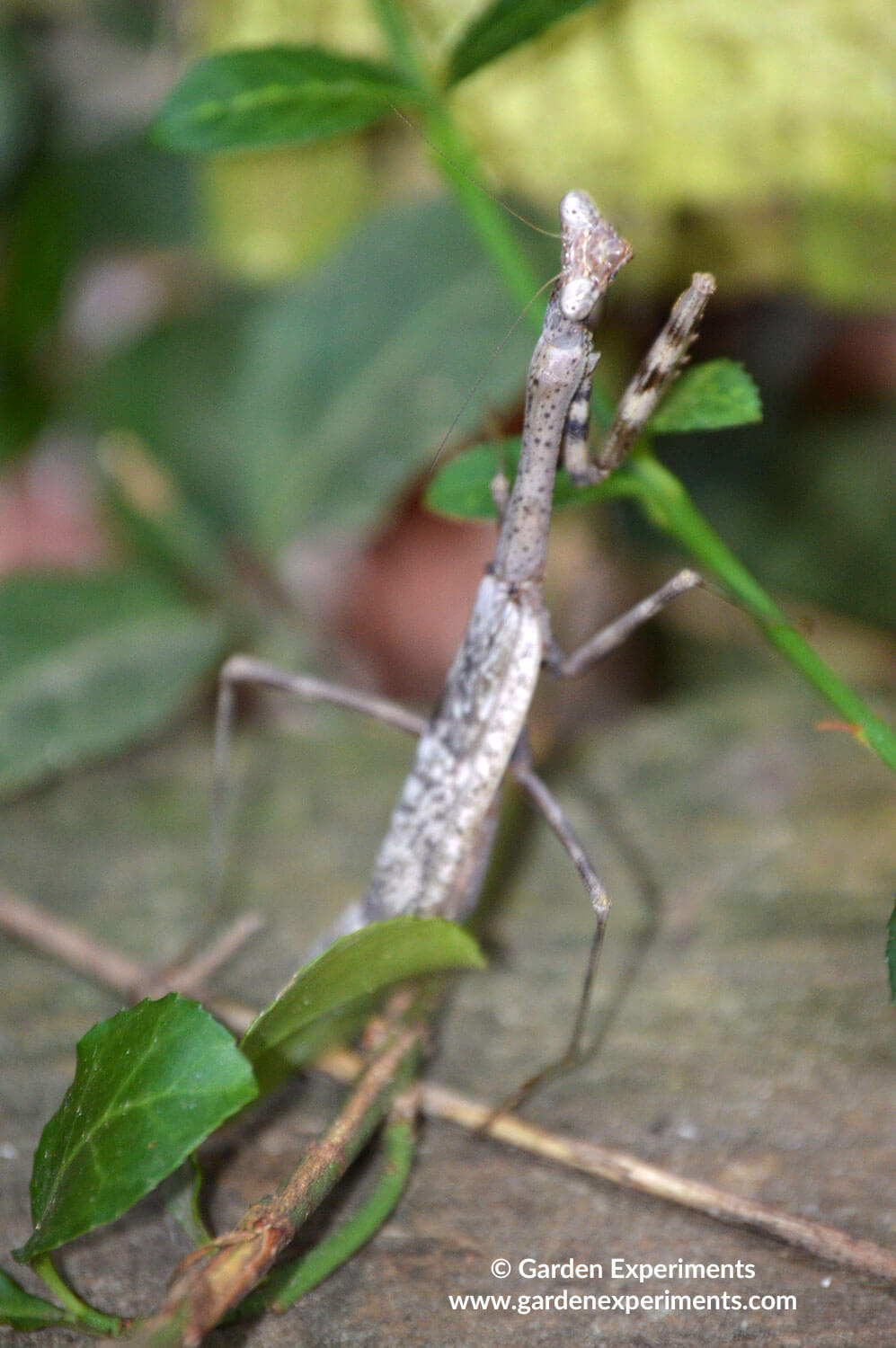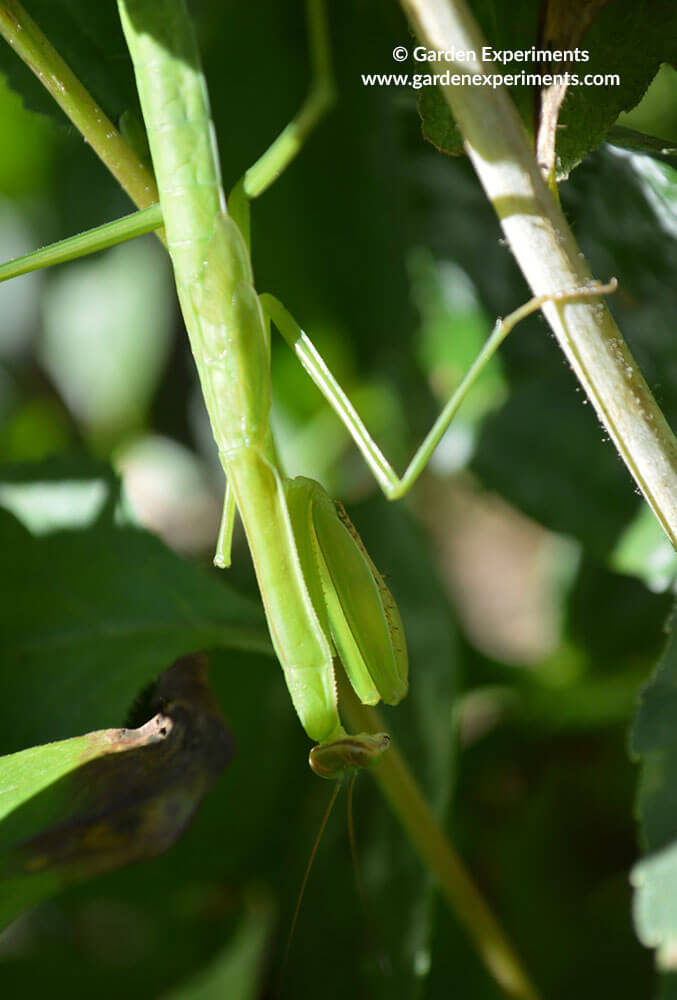
I was opening the door to the storage space under my house to get the lawn mower when my hand brushed across something, and it moved. I sure did jump and so did it! When I looked at the ground, I found a brown praying mantis looking back up to me in what I perceived as a highly offended manner.
Luckily, I had not crushed this insect, but to be honest, I do not like to touch them. I think it has to do with their size and their carnivorous diet. But I do appreciate them for their hunting skills and I welcome them as an addition to my garden.
What A Praying Mantis Eats
These are carnivorous insects that lie in wait for their prey. They are camouflaged pretty well (there are some fascinating ones that look just like leaves) and will ambush prey as it comes near.
They grab the prey with their spiny front legs and eat the prey live. The spines on their front legs help them to grip prey and prevent it from escaping.
Praying mantises mainly eat a variety of insects such as grasshoppers, crickets, and spiders, and they can be carnivorous. However, larger praying mantises may also eat frogs, lizards and even small birds. They are a non-specific predator and will eat any insect that comes its way – including those I cherish in my garden like butterflies and bees.
What Eats a Praying Mantis
Although they may be at the top of the insect food chain, these insects are preyed upon as well by bats, spiders, snakes, and birds. They rely on their camouflage and ability to fly to help them avoid predators.
Cool Facts about Praying Mantises
In addition to the unique look of the praying mantis, here are a few interesting facts about them:
- They only have one ear
Scientists speculate that the location of the ear helps them to detect one of their primary predators – bats.
- Their name comes from the way they sit in wait with their front legs clasped in front of them. It may appear as if they are sitting and praying.
- They can turn their head a full 180 degrees!
This helps them to hunt by sight better as they can see around them well.

- They eat their prey live.
All I have to say to that one is yuck!
In spite of my queasiness around touching a praying mantis, they are fascinating to watch and I appreciate having them in my garden. Along with that appreciation comes the awareness that they may eat some of the insects that I try so hard to attract to my garden. In my opinion, that is just nature doing its thing and I let them be when I find them.
